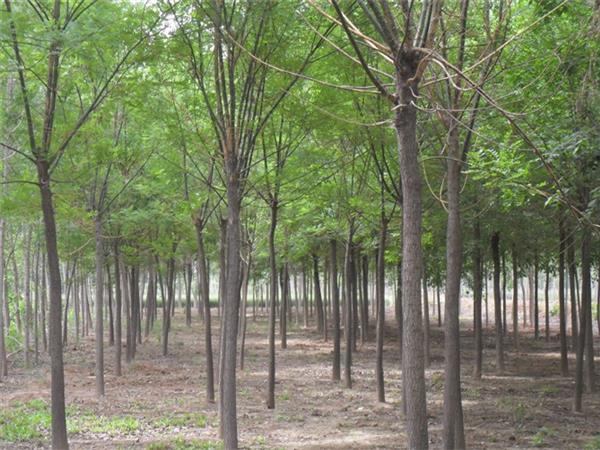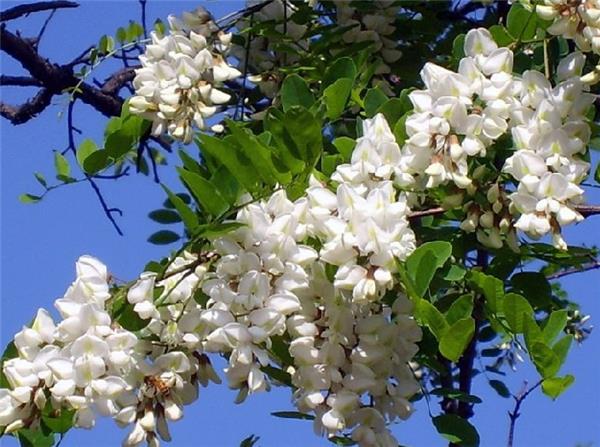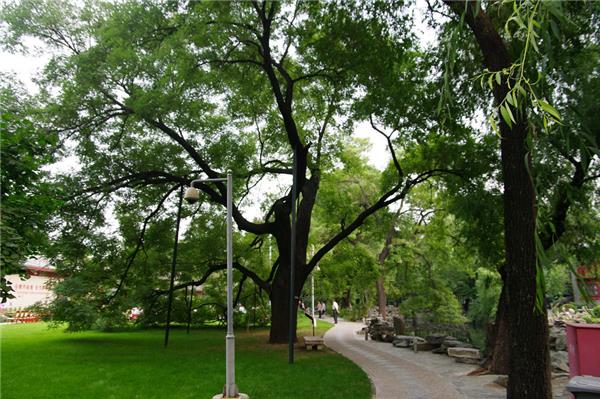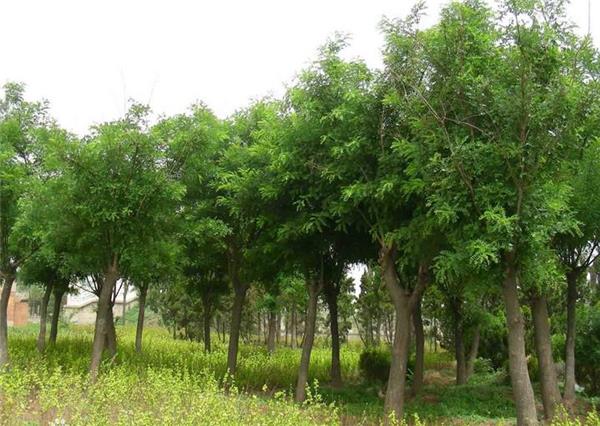How to cultivate Robinia pseudoacacia and how to control its diseases and insect pests
Robinia pseudoacacia is a common tree species on both sides of the road, landscape design and courtyard greening. Its tree shape, branches and leaves, flowers and fruits all have high ornamental value, and it is relatively easy to raise.

I. points for attention in sowing Robinia pseudoacacia
1. Before sowing, the choice of soil and environment is very important, it is required that the terrain is flat, the soil is fertile and the soil layer is deep, and it is best to stop raising seedlings in dry, barren and stagnant water nursery; secondly, the treatment of seeds is also very important. it is recommended to use soaking or sand storage method before sowing.
two。 Soak the seeds of Robinia pseudoacacia in 80 ℃ hot water and keep stirring the water with tools until the water temperature is 45 ℃. If you need to soak the seeds for a day, you will see the seeds begin to swell. Take out the seeds and cover the seeds with a wet cloth to accelerate germination. It is emphasized here that if the seeds do not expand, just repeat the above steps until they expand, and the seeds can be sown.
3. Put the seeds of Robinia pseudoacacia in the sandy soil about 12 days before sowing, but before putting them into the sandy soil, soak the seeds in water for 24 hours, and put the seeds into the sandy soil 24 hours later. You can use tools such as plastic pots. The seed volume accounts for one-third of the sandy soil, evenly stirring, covering it with plastic cloth, loosening the soil once a day, and sowing seeds after germination. Generally sowing is best in spring.

2. Culture and nursing techniques of Robinia pseudoacacia
Watering: watering according to soil moisture, watering less before emergence, often keeping the soil surface moist, but to prevent soil hardening, resulting in uneven emergence. Watering time is appropriate in the morning and evening, should be irrigated with small water, to prevent seedlings from being washed down or scouring and silting, before freezing should be fully filled with overwintering water.
Topdressing: topdressing mastered the technical essentials of "from sparse to dense, a small amount for many times, timely and appropriate amount, and skillful application by stages". In the fast-growing period of seedlings, urea is applied many times in combination with a small amount of rain, no more than 5 kg per mu each time, and urea and potassium dihydrogen phosphate can also be sprayed on the leaves.
Loosening soil and weeding: in order to prevent soil hardening, and weeds compete with seedlings for fertilizer and water, improve aeration conditions and promote root development, soil loosening and weeding should be done in time. Adhere to the principle of "except early, small, except", pull out the seedlings by hand to prevent injury, and remove the grass in combination with loosening soil between rows, mostly after watering or after rain.
Seedlings: when the seedlings grow to 15 cm high, pull out the overdense and weak seedlings, divide the seedlings into 2 to 3 times, and set the seedlings according to the plant spacing of 10 to 15 cm.

III. Pest control of Robinia pseudoacacia
Locust aphid: it occurs for many generations a year, and adults and nymphs cluster on tender shoots, inflorescences and pods to absorb juice. the injured shoots atrophy and droop, hinder apical growth, seriously damaged inflorescences can not bloom and die, and coal fouling disease is induced at the same time. Autumn and winter spray stone sulfur mixture can be used to eliminate overwintering eggs. When there is a large number of aphids, 40% omethoate, 50% malathion emulsion or 40% acephate 1000 to 1500 times, or fish rattan essence 1000 to 2000 times, 10% aphid lice net wettable powder 3000 to 4000 times, 2.5% deltamethrin EC 3000 times.
Huai Zhi E: the pupa overwinters in the loose soil around the tree, and the larvae and adults encroach on the tree leaves, causing the leaves to be notched. In serious cases, almost all the leaves of the whole tree are eaten up. Digging pupae under the crown and in the surrounding loose soil from deciduous leaves to germination to eliminate overwintering pupae. 600 times of Bacillus thuringiensis emulsion can be used for biological control.
Robinia pseudoacacia leaf moth: causes the compound leaves of trees to wither and fall off, and in serious cases, the crown appears bald and withered shoots. Spray 40% acephate EC 1000 to 1500 times, 50% fenitrothion 1000 times, or 50% malathion EC 1000 to 1500 times during the occurrence of pests.

Generally speaking, Robinia pseudoacacia is a kind of tree species with long life and tenacious vitality, so it is relatively simple to raise it. If there are suitable places such as a courtyard at home, friends who are interested in Robinia pseudoacacia can try to breed it.
Related
- Wuhan Hospital Iron Tree Blooming Result Was Instantly Frightened by the Gardener Master
- Which variety of camellia is the most fragrant and best? Which one do you like best?
- What is the small blue coat, the breeding methods and matters needing attention of the succulent plant
- Dormancy time and maintenance management of succulent plants during dormancy
- Minas succulent how to raise, Minas succulent plant pictures
- What are the varieties of winter succulent plants
- How to raise succulent plants in twelve rolls? let's take a look at some experience of breeding twelve rolls.
- Attention should be paid to water control for succulent plants during dormant period (winter and summer)
- Watering experience of twelve rolls of succulent plants
- Techniques for fertilizing succulent plants. An article will let you know how to fertilize succulent plants.



